Venus Pictoria
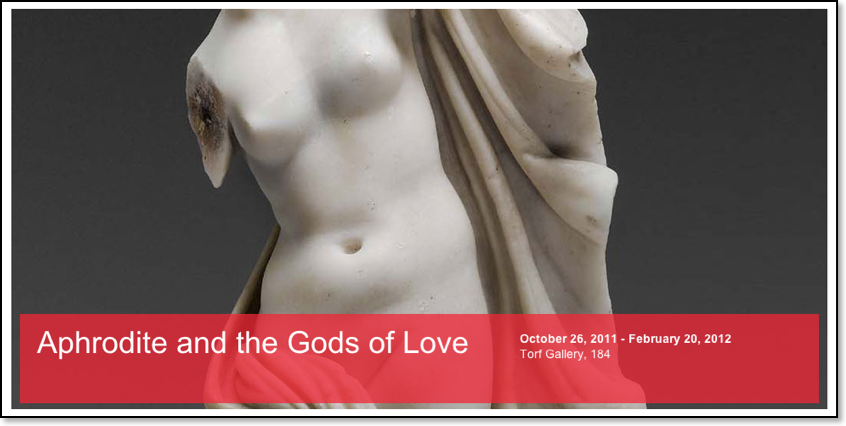
Se pueden ver piezas como estas: (el museo no da más noticia de esta pieza en su página web)
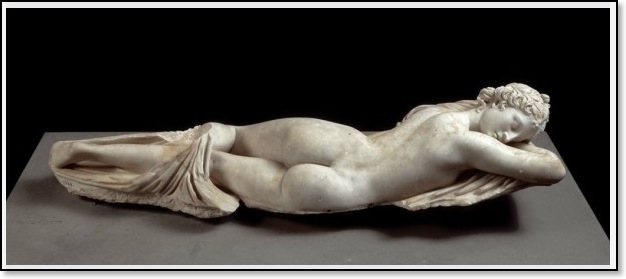
Y esta: (el museo no da tampoco noticia de esta pieza en su página web)

Eros durmiendo III
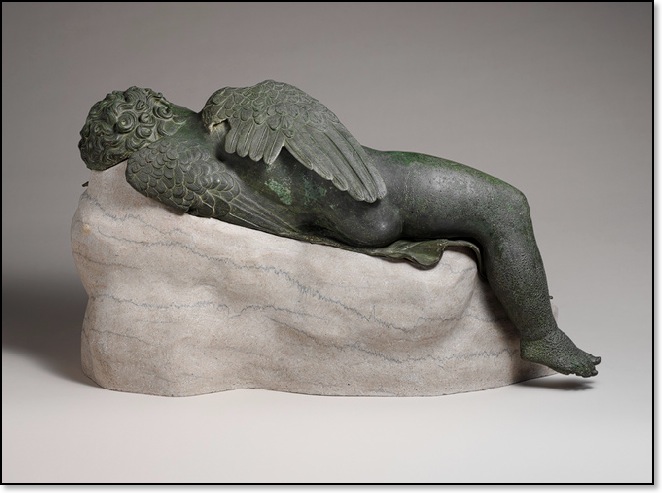
"Statue of Eros sleeping [Greek or Roman] (43.11.4)". In Heilbrunn Timeline of Art History. New York: The Metropolitan Museum of Art, 2000–. http://www.metmuseum.org/toah/works-of-art/43.11.4 (April 2007)
Eros durmiendo II

"Statue of Eros sleeping [Greek or Roman] (43.11.4)". In Heilbrunn Timeline of Art History. New York: The Metropolitan Museum of Art, 2000–. http://www.metmuseum.org/toah/works-of-art/43.11.4 (April 2007)
Eros durmiendo I
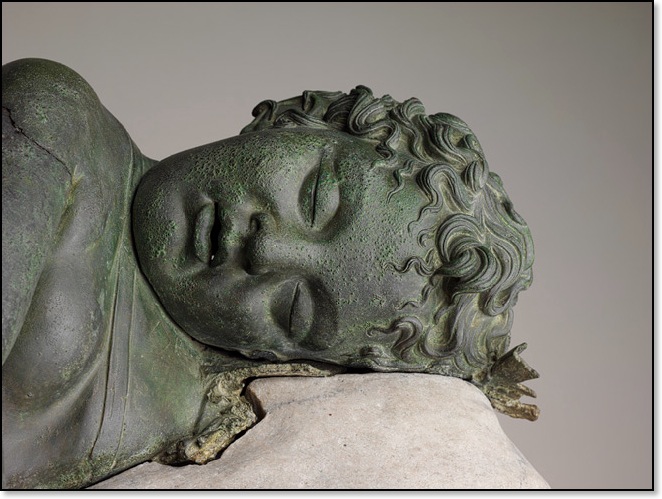
Statue of Eros sleeping, Hellenistic or Augustan, 3rd century B.C.–early 1st century A.D.
Greek or Roman
Bronze
L. 33 9/16 in. (85.24 cm)
Rogers Fund, 1943 (43.11.4)
"Statue of Eros sleeping [Greek or Roman] (43.11.4)". In Heilbrunn Timeline of Art History. New York: The Metropolitan Museum of Art, 2000–. http://www.metmuseum.org/toah/works-of-art/43.11.4 (April 2007)
The Hellenistic period introduced the accurate characterization of age. Young children enjoyed great favor, whether in mythological form, as baby Herakles or Eros, or in genre scenes, playing with each other or with pets. This Eros, god of love, has been brought down to earth and disarmed, a conception considerably different from that of the powerful, often cruel, and capricious being so often addressed in Archaic poetry. One of the few bronze statues to have survived from antiquity, this figure of a plump baby in relaxed pose conveys a sense of the immediacy and naturalistic detail that the medium of bronze made possible. He is clearly based on firsthand observation. The support on which the god rests is a modern addition, but the work originally would have had a separate base, most likely of stone.
This statue is the finest example of its kind. Judging from the large number of extant replicas, the type was popular in Hellenistic and, especially, Roman times. In the Roman period, statues of Sleeping Eros decorated villa gardens and fountains. Their function in the Hellenistic period, however, is less clear. They may have been used as dedications within a sanctuary of Aphrodite or possibly erected in a public park or private, even royal, garden.
El juicio de Paris
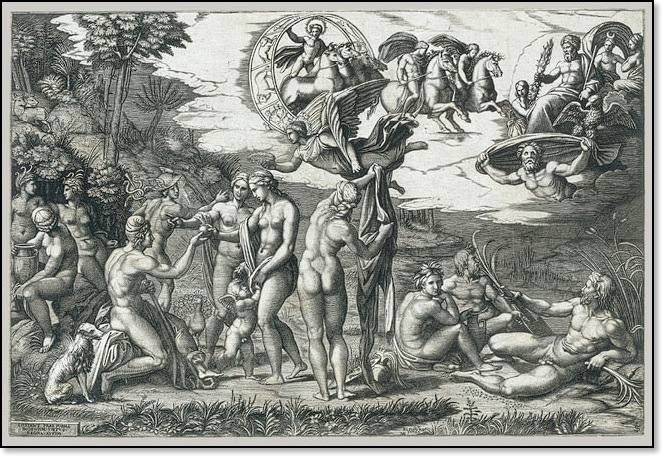
"Marcantonio Raimondi, designed by Raphael (Raffaello Sanzio or Santi): The Judgment of Paris (19.74.1)". In Heilbrunn Timeline of Art History. New York: The Metropolitan Museum of Art, 2000–. http://www.metmuseum.org/toah/works-of-art/19.74.1 (October 2006)
Hermanubis
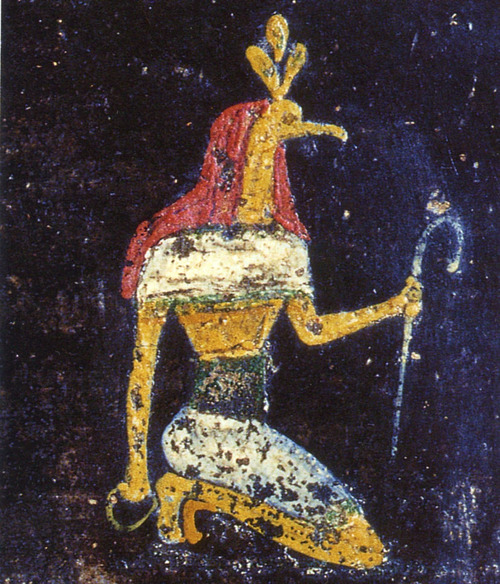
Esta es la foto que más me ha llamado la atención de la Villa dei Misteri (Pompeya). ¿Qué significa? Un hombre sentado sobre sus talones y vestido a la egipcia. El dios egipcio Anubis: con la cabeza de perro, aquí más bien con pico de pájaro, un aro en la mano derecha, que casi toca el el suelo y la otra mano con el bastón. Anubis es el dios carroñero por excelencia de la mitología egipcia. Fue venerado por los romanos con el nombre de Hemanubis. El nombre de hermanubis procede de unir el nombre del dios Hermes y el de Anubis. Estos dioses en época de los Lágidas tenían su campo de influencia en el mundo de los muertos. Los romanos seguirán venerando a Hermanubis un siglo después en sus ritos funerarios. Una muestra más de que los romanos eran capaces de conquistar nuevas tierras militarmente, pero de asimilar las culturas de los pueblos conquistados. Lo hicieron con los griegos, lo harán con los egipcios y los orientales, principalmente en la religión, pero los bárbaros del norte era demasiado.
